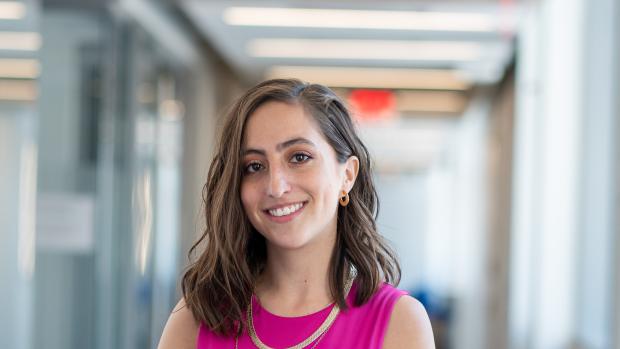Building better cities — and stronger professional networks
Center for Urban Science and Progress alumni are making an impact

Recent Center for Urban Science and Progress (CUSP) graduate, Analaura Tostado
When she was the CEO of Hewlett-Packard, Carly Fiorina once famously said, “The goal is to turn data into information and information into insight.” It’s practically a truism now that data equals knowledge — valuable knowledge that can be put to use to improve outcomes in any domain imaginable, from healthcare and education to manufacturing and urban planning.
At NYU Tandon’s Center for Urban Science and Progress (CUSP), students in the Applied Urban Science and Informatics master’s program learn to formulate relevant questions about their surroundings and how to answer those questions using large data sets.
Recent graduate Analaura Tostado, for example, had worked for five years as an architect in her native Mexico before deciding to expand her horizons by exploring urban design and planning. After researching programs — and winning a prestigious Fulbright Scholarship — she arrived in Brooklyn to study at CUSP and undertake an ambitious capstone project focused on the city of Baton Rouge, Louisiana, where some communities were rife with vacant and abandoned properties that not only presented a financial burden to local government but dangers to the health and safety of residents.
She explained, “We knew that rehabilitating those properties would revitalize entire communities. We can observe some of the physical burdens of having vacant or distressed properties, such as overgrown vegetation, broken windows, possible increase in crime rates and the impact they have in a community, but no one has yet fully documented the financial costs. Presenting those numbers to the authorities and interested stakeholders is a great incentive to return these properties to a productive use, by encouraging new commercial activity, boosting tax revenue, and also offering public spaces for social purposes or even flood mitigation strategies.” Working under the auspices of Manny Patole, a Baton Rouge-based community engagement leader, and Rebeca de Jesus Crespo, a professor in the Department of Environmental Sciences at Louisiana State University, who were sponsoring the capstone, she and her teammates gathered information on the vacant properties and assessed maintenance costs, with the purpose of adding this information into a user-friendly GIS (Geographic Information Systems) tool aimed at helping the government, the community, and interested stakeholders identify the areas most in need of intervention.
“Studying at CUSP opened my eyes to the complexities of urban systems and how to use data to better understand all facets,” she said. “After all, you can’t really solve a problem without fully understanding it, and data can greatly increase our understanding. With my architecture background and now as an urban scientist, I aim to work as an urban planner, for which I would have to parse a lot of data, and after my time at NYU I feel confident that I’ll be able to leverage it wisely.”
Tostado highlights yet another benefit of studying at CUSP, as well: the opportunities for networking. She is currently employed at the National Community Stabilization Trust, a nonprofit whose mission is to increase homeownership by expanding the supply of affordable, single-family homes to stabilize neighborhoods, build community wealth, and advance racial equity. “My current position is a direct result of connections I made while working on my capstone project,” she says, “so that was an unforeseen benefit.”
Natalie Quah, like Tostado, earned her master’s degree Applied Urban Science and Informatics in 2023. Born and raised in Singapore, she was an intern at her country’s Urban Redevelopment Authority, which operates under the Ministry of National Development and is charged with long-term planning, design, and conservation. As a condition of a scholarship she received, she returned to Singapore after finishing her capstone — Machine-learning Mapping of Heat Risk in Cities Using Satellite and Ground Data in Google Earth Engine, a topic of enormous applicability in Singapore’s tropical climate — and assumed a full-time job as an urban planner at the Authority.
Still, she says, while she did not leverage the CUSP network to find her current job, the contacts she made there are invaluable. “CUSP allowed me to make friends and professional connections all over the world,” she asserted. “In the course of urban planning, issues inevitably arise that require a high level of expertise in a specific area. So if I ever need to learn more about flood risk or the social implications of a particular policy, for example, I now know who to turn to. My CUSP network is just a phone call or email away.”




